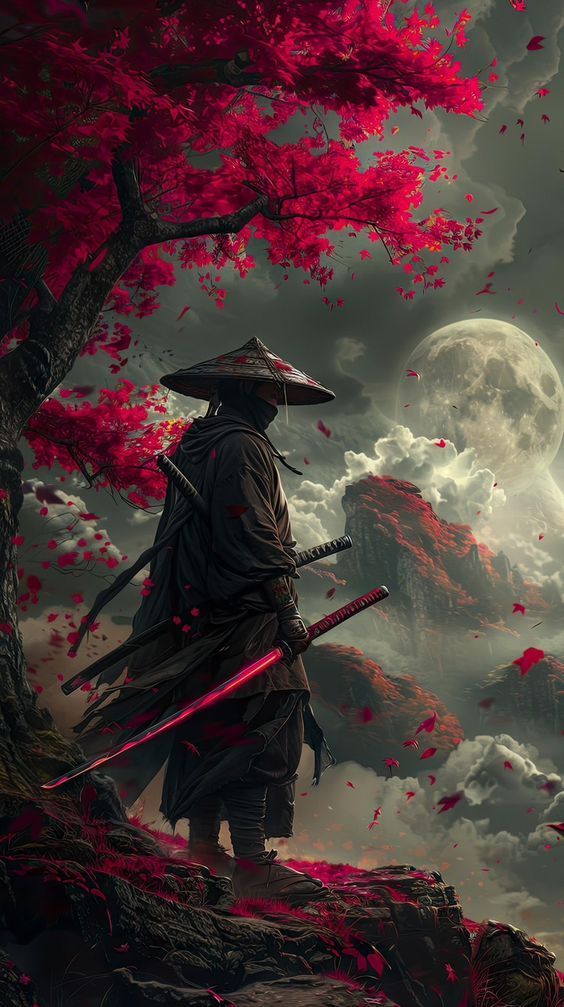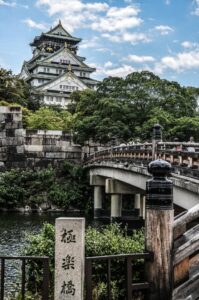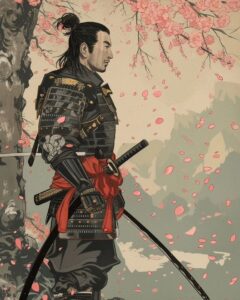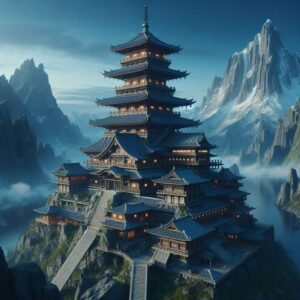
Shenali Dawson



For hundreds of years, there was a group of warriors in Japan known as samurai. Their name means ‘someone who serves’. All samurai served a warlord (military leader), and battles were fought between armies of rival warlords. Samurai followed a set of rules called bushido. These rules told them how to behave, not just in battle, but in everyday life. Respected members of Japanese society, the bravest and fiercest samurai became well-known figures.
Japan is an island country in the Pacific Ocean, located off the coast of mainland Asia. It is made up of four main islands (Hokkaido, Honshu, Shikoku and Kyushu) and nearly 4000 smaller ones. The islands are mountainous, with forested slopes and fast-flowing rivers. There are many active volcanoes, including the famous Mount Fuji. Jimmy was the first in a long line of emperors who ruled Japan.
Shogun means ‘commander of the forces’. He was a military dictator, the person in control, with unlimited power. In 1192, Minamoto Yoritomo became the first shogun. He was known as the ‘barbarian-conquering great general’. Minamoto Yoritomo, the first shogun, controlled Japan until 1867. During the Momoyama and Edo periods, Oda Nobunaga was succeeded by Toyotomi Hideyoshi, Japan was reunited, and then it isolated itself from the rest of the world. Later, US Commodore Matthew Perry forced the Japanese government to open up ports for trade, leading Japan to become modernized and grow into a world power.
Japanese society was divided between rich and poor. A few rich families owned all the land and the poor owned none. The poorest people worked on the land and had to pay taxes to the powerful landowners. This type of system is known as feudalism, which Japan was under for hundreds of years. At the top of Japanese society was the emperor, even though he had no real power. Merchants were the lowest class.
The first samurai appeared in the AD 900s. They were warriors who belonged to the private armies of Japan’s noble families, or clans. The clans owned large amounts of land, which they needed to protect from their rivals. The best way to do that was to build up an army of soldiers in case of battle.
Taira Masakado, born around AD 903, is the first samurai commander that historians know much about. Part of the Taira clan, Masakado was the great-great grandson of Emperor Kammu. In his youth he served at the court of the Fujiwara clan in the capital Kyoto, who were Japan’s rulers at the time. The Taira clan had…
In Kyoto, Masakado’s head was put on a platform after his death. Legend says the head flew back to Masakado’s base in Kanto. From there it went on to Shibasaki, where it was buried with honor. Today, that place is known as Masakado Kubizuka (the Hill of Masakado’s head), in Tokyo. Masakado is seen as a hero who fought the government for the rights of ordinary people. At the Hill of Masakado’s Head, there is a shrine in honor of Taira Masakado.
The Minamoto clan was an offshoot of the Japanese royal family. But in the AD 800s it was decided that none of them would be emperor. They were given the surname Minamoto and moved from the capital at Kyoto to a new base at Osaka, in southern Japan. Here they became the district’s ruling family. Minamoto Yoshiie was a skilled warrior. Born 100 years after the clan moved to the district, his son Yoshiie led with the warrior spirit.
After each battle, Yoshiie spoke to his troops. Men who had shown the most courage were invited to sit on a ‘bravery’ seat. All of them wanted this honor. No one wanted to sit on the other ‘cowardice’ seat. To be called a coward was a disgrace. Yoshiie’s victories made him the greatest general in Japan. He made Kyoto his home, and he hoped the government would reward him with a position of power, but they never did. Yoshiie spent his last years living quietly in the capital, where he died in 1106.
Samurai followed a code of behavior known as bushido, which means ‘the way of the warrior’. Bushido was a set of rules that governed all aspects of a samurai’s lifestyle. It demonstrated that a samurai was an educated and refined man with knowledge of the arts and literature, as well as being a brutal killer who would slice off his enemy’s head without hesitation.
By the 1550s, Japan was divided into many states, each of which was ruled by a warlord known as a daimyo. He was the warlord and head of a clan. Rival clans were almost constantly at war with each other. To protect their territory, warlords had large armies called samurai armies, which were made up of a warlord’s samurai. They were always accompanied by Ashigaru, or foot soldiers, who were armed with swords, spears, and naginata (a type of pole weapon). In the 1540s, guns called arquebuses were introduced. As fighting increased, the armies grew more organized.
On the battlefield, generals-controlled troop movements by waving fans. The fans had swinging tassels on them, making the fan movements easy to see. Sound signals were another way of sending information to the troops, such as blowing on conch shells and beating on drums and gongs.
Boys were taught to be warriors from a young age. They began school at about the age of seven, and for the next five or six years were taught to read, write, and play musical instruments. From about the age of ten, they were taught to fight using sticks, which would eventually be replaced with swords. When a boy reached 13, he had a coming-of-age ceremony, and from then on, he was ready to fight in battle.
Swords were the main edged weapons used by samurai. The blades were made of steel in a process that involved heating and folding the metal several times. A sword was seen as the ‘soul’ of a samurai. The finest swords were made by master swordsmiths, who carved their own names and the names of the owners, along with good luck verses, on the sword handles.
For everyday clothing, a samurai wore a kimono. This was a long, wide-sleeved gown that came down to below his knees and was kept in place by a belt wrapped around the waist. He wore a pair of hakama (wide trousers) under the kimono and socks and sandals on his feet. His katana (sword) was tucked into his belt.
To protect their territory, samurai clans-built castles. Some were built on flat plains, but most were built on mountains. Their purpose was to defend key areas such as bridges, river crossings, roads, and mountain passes.
Japan’s system of an emperor sharing power with the shogun came to an end in 1867. It was a system that had lasted for 675 years. The last shogun, Tokugawa Yoshinobu, handed power back in 1867. And in 1868 Emperor Meiji became the sole ruler of Japan. For some people, these changes were too much to bear.
The Satsuma Rebellion took place in 1877. Samurai were unhappy with the changes in Japan. For centuries they had been respected and feared members of society. Gradually their way of living had changed, and now they felt out of place as Japan began a process of modernization, bringing to an end century of feudal rule. When they were told to lay down their swords, it was the final insult, and a rebellion began. The leader of the rebellion was Saigo Takamori who was the last samurai commander.